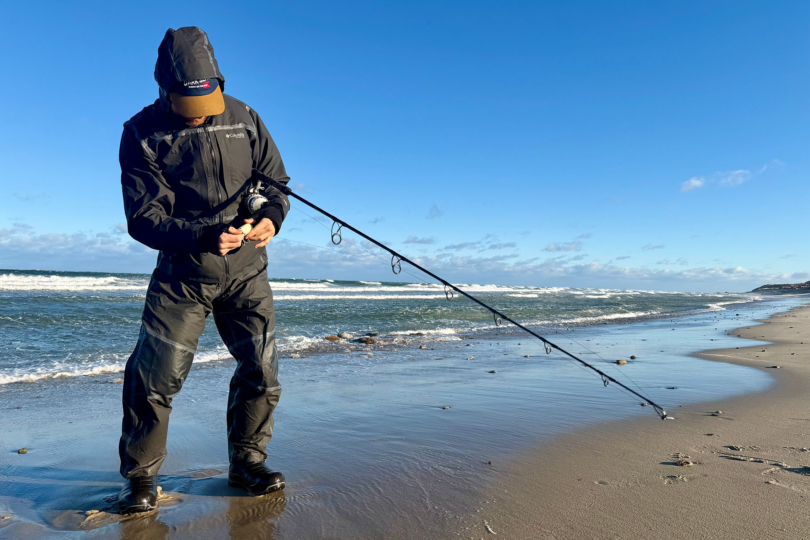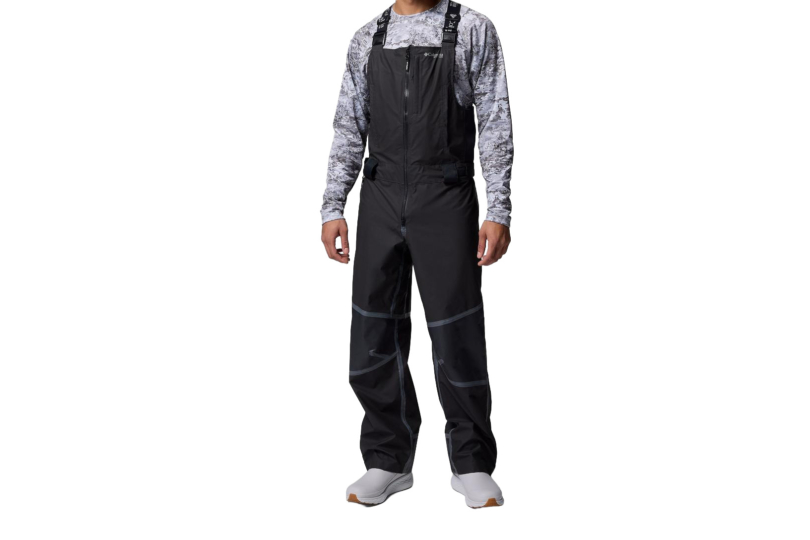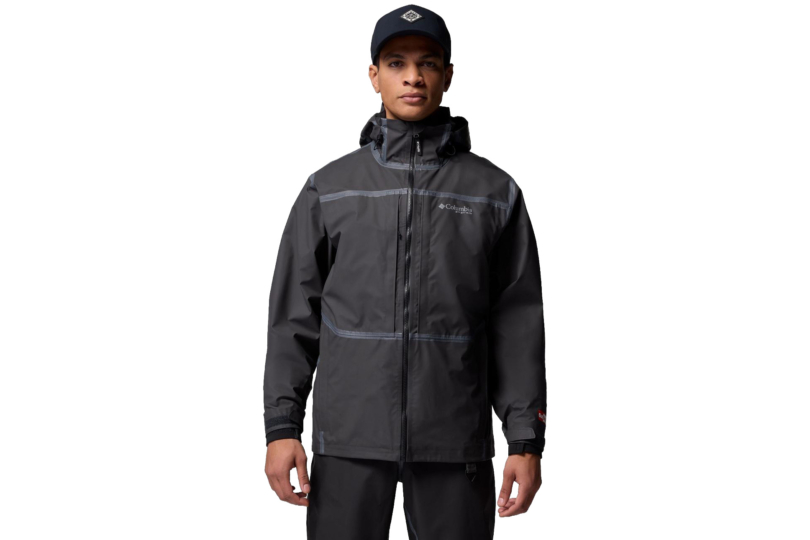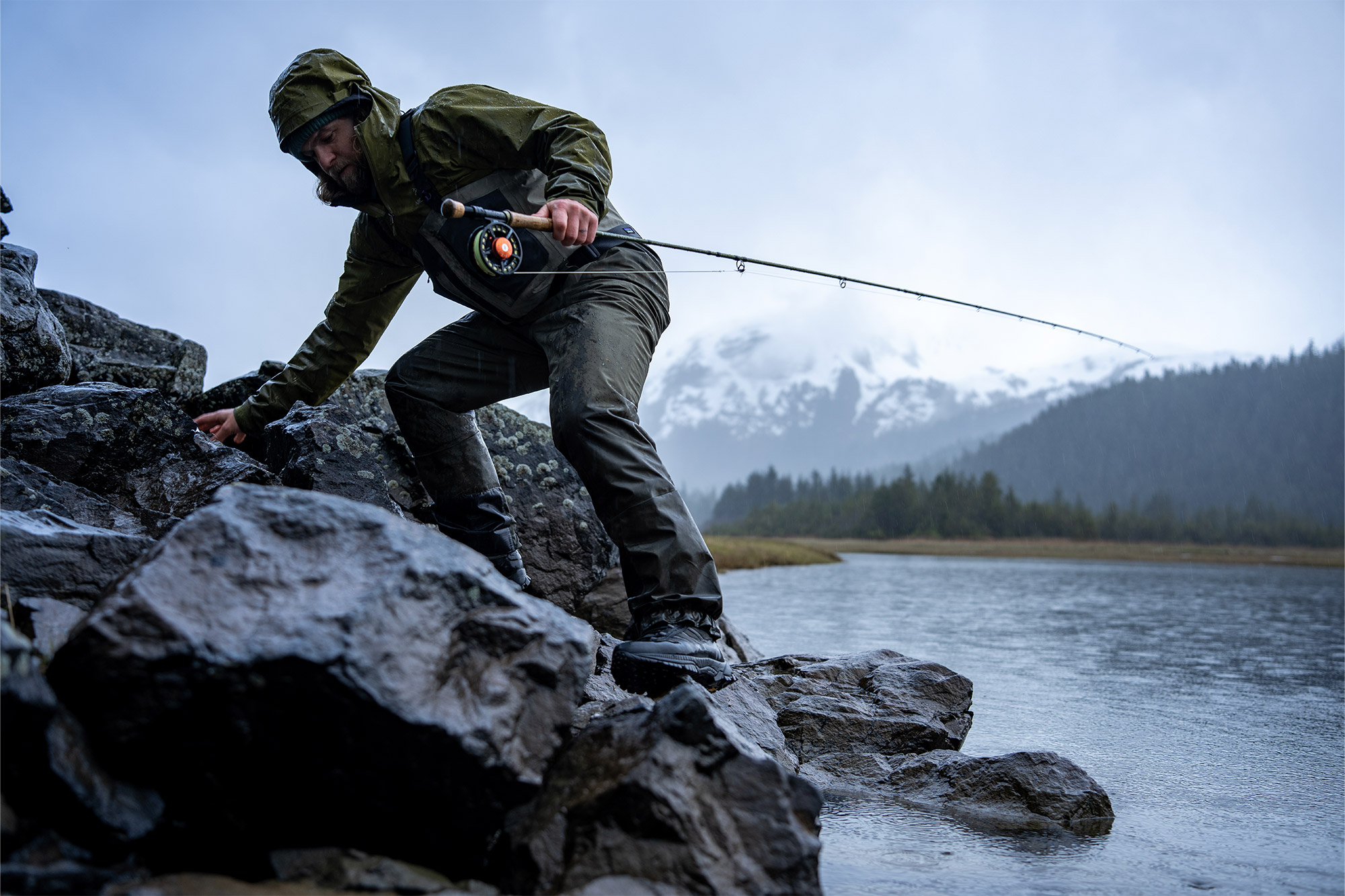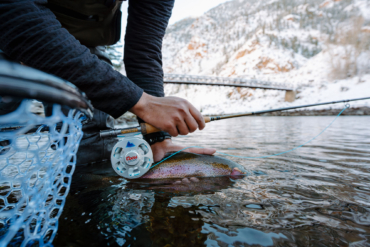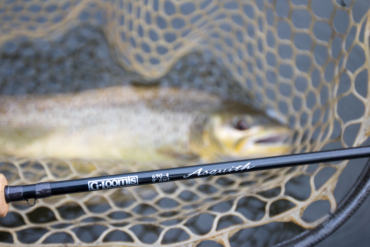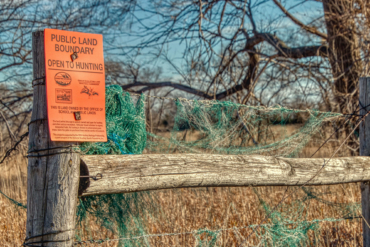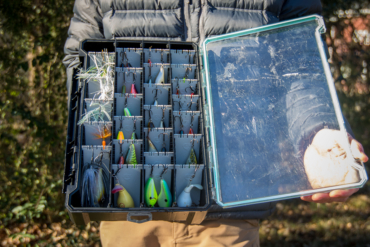As a native Cape-Codder, foul-weather and chilly temps are arguably the two biggest challenges to enjoying my fall and winter fishing trips. While run-and-gun fishing offshore and getting clobbered by the rain and breakers from the beach, Fort Knox-level storm gear is the only way I endure the elements and keep fishing.
Enter the Columbia Force XII Collection, an iron-wall defense against the wet and wind that enables you to keep your core dry and your mind sharp, so you can laugh in the face of sideways rain and make as many “last-casts” as you want.
In short: The Force XII Collection from Columbia is engineered for the foul-weather fisherman. Combining a first-of-its-kind impenetrable external membrane with soft, moisture-wicking internal fabric, Columbia’s OutDry Extreme tech is a no-nonsense barrier to the elements. Combine the impressive weatherproofing with a stacked lineup of mindful fishy features to further boost functionality and safety, both the PFG Force XII ODX Bib and Jacket are must-have pieces of stormwear for your gear locker.
Looking for waders instead? Check out our buyer’s guide to the best fishing waders of the year.
- Shell: 100% recycled nylon
- Overlay: 100% polyester (abrasion resistance)
- Stretch panels: 77% polyester, 23% elastane
- Waterproofing: OutDry Extreme
- Insulation: Light warmth (uninsulated shell)
Pros
- Excellent waterproofing with no DWR to wear out
- Lightweight and highly packable for a bib
- Stretch panels provide real mobility
- Good front coverage and secure fit
Cons
- Very limited pocket space
- Ankle cuffs could cinch tighter
- Shell: 100% recycled nylon
- Waterproofing: OutDry Extreme
- Insulation: Light warmth (uninsulated shell)
- Weight: 21.92 oz. (men’s medium)
Pros
- Outstanding waterproof and wind protection
- Well-designed hood and collar for high-wind conditions
- Neoprene cuffs keep water out while handling fish
- Ample pocket space for fishing essentials
Cons
- Warmer-running shell for peak summer heat
- No color options
- Built for weather protection over ventilation priority
Columbia PFG Force XII ODX Bib and Jacket Review
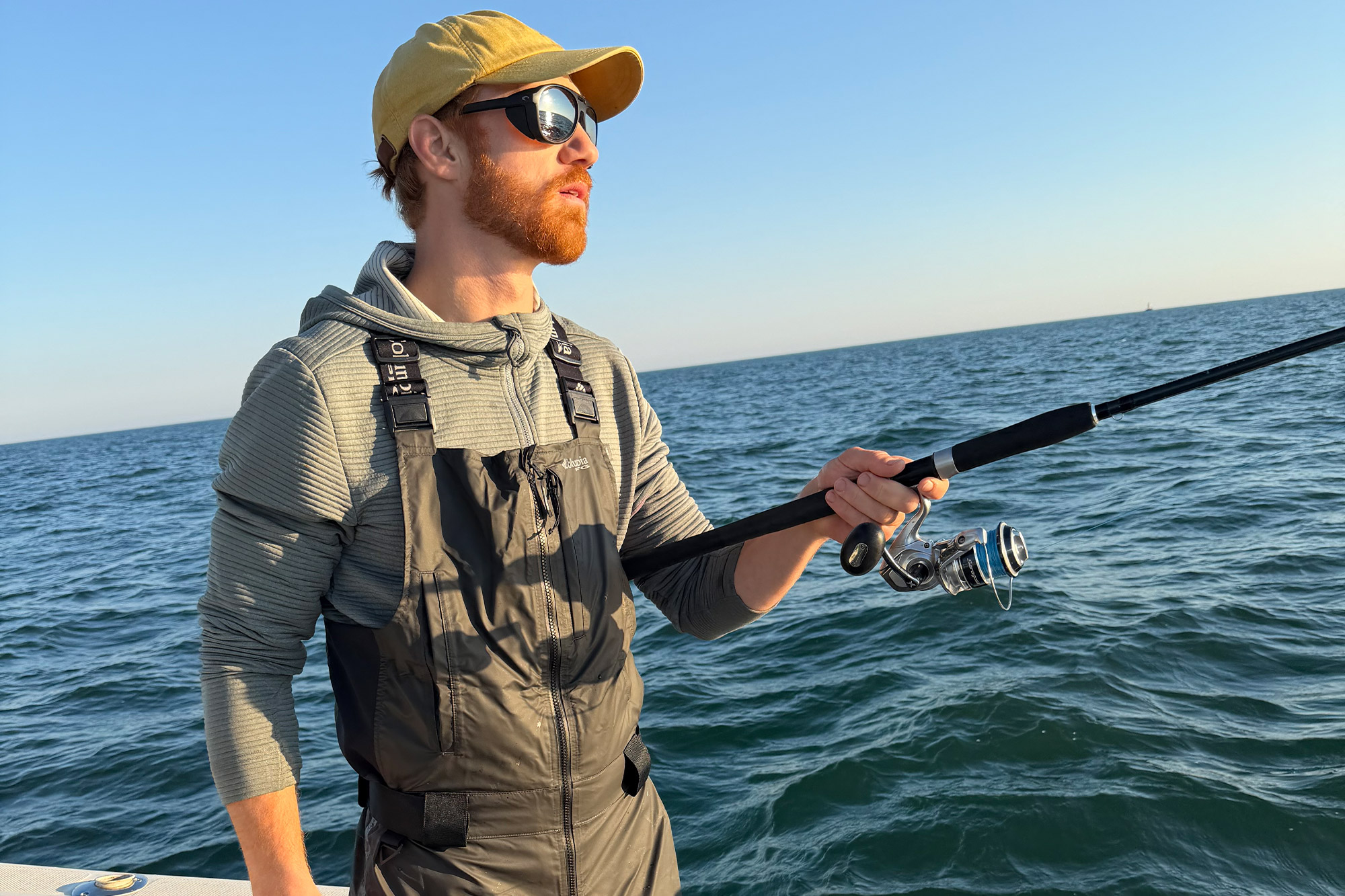
My grandfather always used to say that you can only be as dry as your rain gear is impermeable. All right, maybe I never heard him say that. But the guy loved being outside and hated getting wet, so I reckon he was thinking it. What I do know for sure is that when you’re getting absolutely dumped on offshore or beach fishing through nasty weather, staying dry is everything.
The PFG Force XII ODX Bib and Jacket are both fantastic garments for ensuring the outside wet doesn’t become inside wet. So, my grandfather would most definitely be a big fan. Any angler who doesn’t let a little wind and rain stop them from chasing the bite needs to have this product line on their radar.
Offering feature-rich designs and impressive packability and weight for their level of weather-proofing, both garments have become staples in my wardrobe for foul-weather applications spanning far beyond solely fishing.
PFG Force XII ODX Bib and Jacket: In the Field
Field testing the ODX Bibs and Jacket was consistently positive. I tested the Force XII Collection on Cape Cod while fishing the fall run for striped bass, false albacore, and tautog, both from wave-battered shoreline rocks and offshore while running and gunning. When worn together, the bibs and jacket never allowed rain or boat spray to get through.
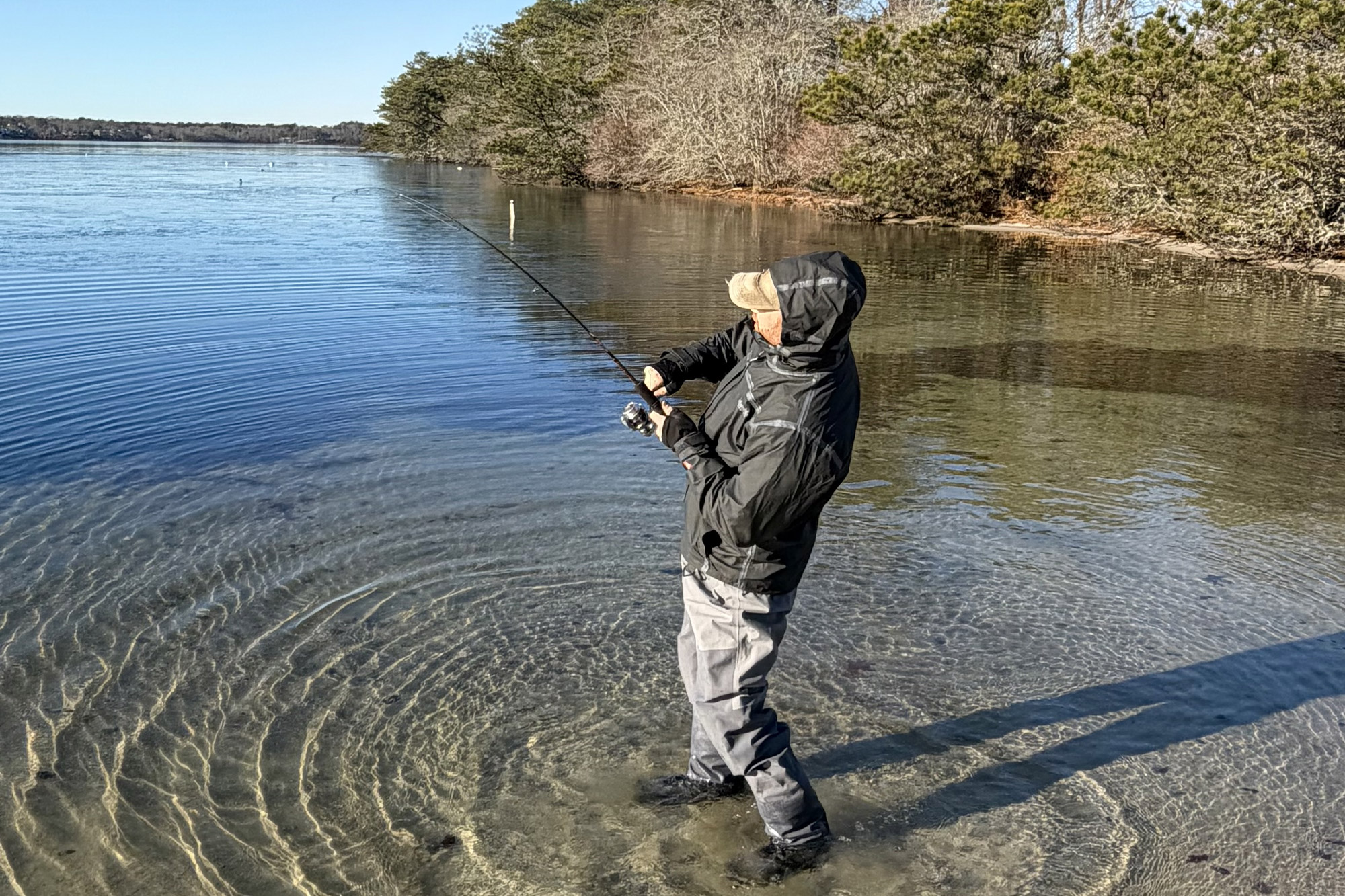
Wind Who?
The ODX Jacket stood out in heavy wind, whether running at speed or dealing with stiff gusts from shore. The hood design, in particular, was a standout. Being able to quickly cinch it down and not worry about my hat blowing off was one of my favorite features. Paired with the high collar, it provided excellent face coverage without irritating my skin or beard.
I typically wore the bibs over regular pants and the jacket over a base and midlayer, with room to add a vest without feeling bulky. Both pieces kept me comfortable in cool, damp fall conditions.
I haven’t tested them below freezing, but since the system provides light warmth, insulation depends largely on what you layer underneath. Based on performance so far, I expect to keep relying on this setup as temperatures drop.
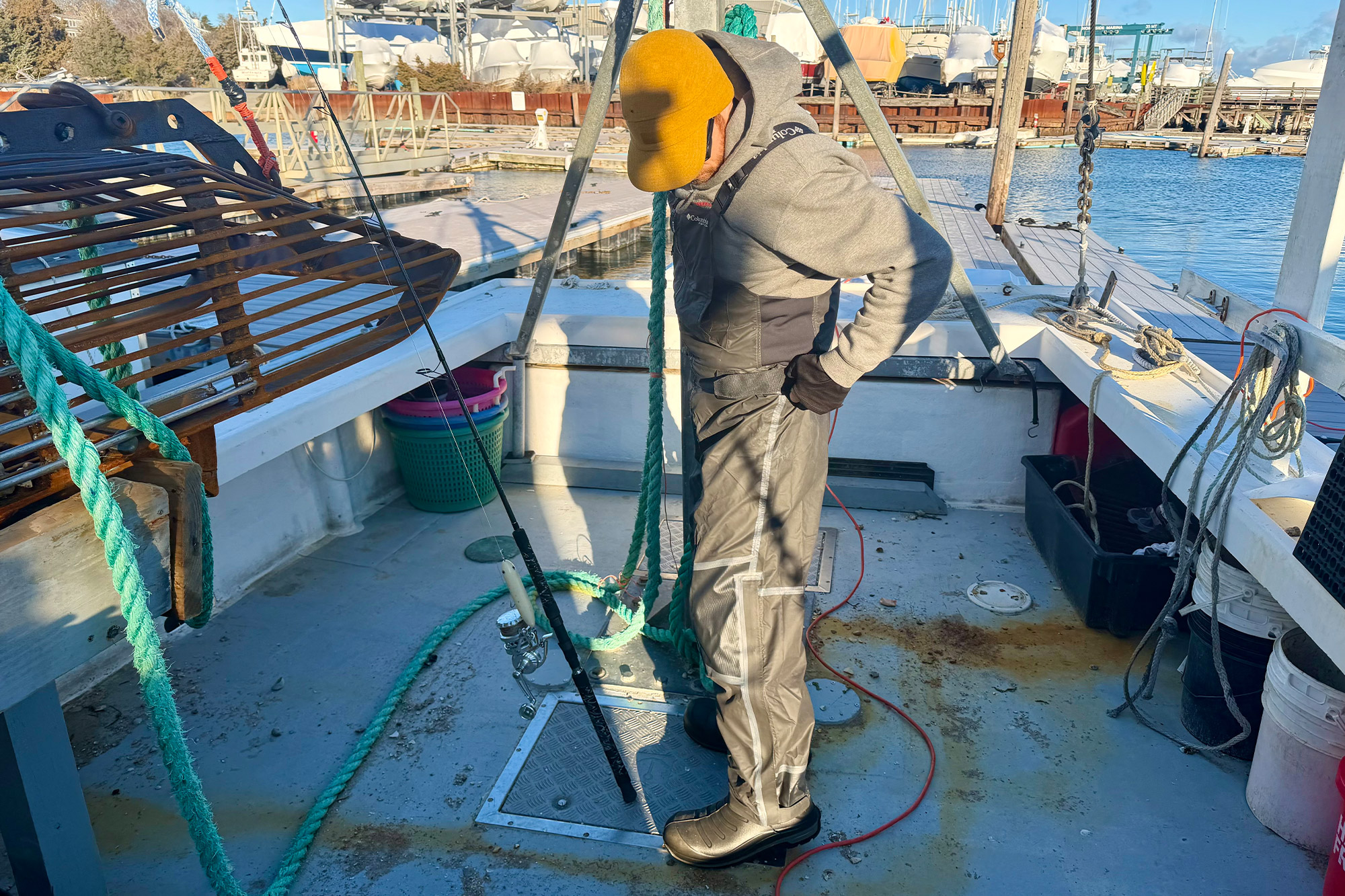
Hardy and Tough
Testing the Force XII Collection while cutting and baiting crabs all day highlighted the abrasion-resistance of the ODX Bibs. Leaning against the bait board and brushing into shears, knives, and crab shells resulted in no tears or visible damage.
The shell strikes a good balance between durability and comfort, feeling burly without becoming stiff or cumbersome. It’s not commercial-grade tough, but it’s close. I was also pleasantly surprised that neither the bibs nor the jacket held onto a strong crab odor, which is a small but appreciated win for bait fishing.
I also used the Force XII Collection for lighter-duty fishing, including foul-weather pond sessions. The ODX Jacket wore well over waders, kept me dry, and offered plenty of pocket space for essentials. The neoprene cuffs prevented water from soaking past the wrists while handling fish, and the Velcro closure is better executed than similar designs I’ve used.
Fit and Layout
Both garments offer a regular fit with a full range of motion and enough room to layer underneath. Despite that, both the bibs and jacket wear more streamlined than most foul-weather gear.
The Force XII Collection feels lighter and less bulky, which I attribute both to its low weight and Columbia’s thoughtful tailoring. Both pieces fit true to size, just know they’re designed with layering in mind, so you’ll have extra room.
The Bibs
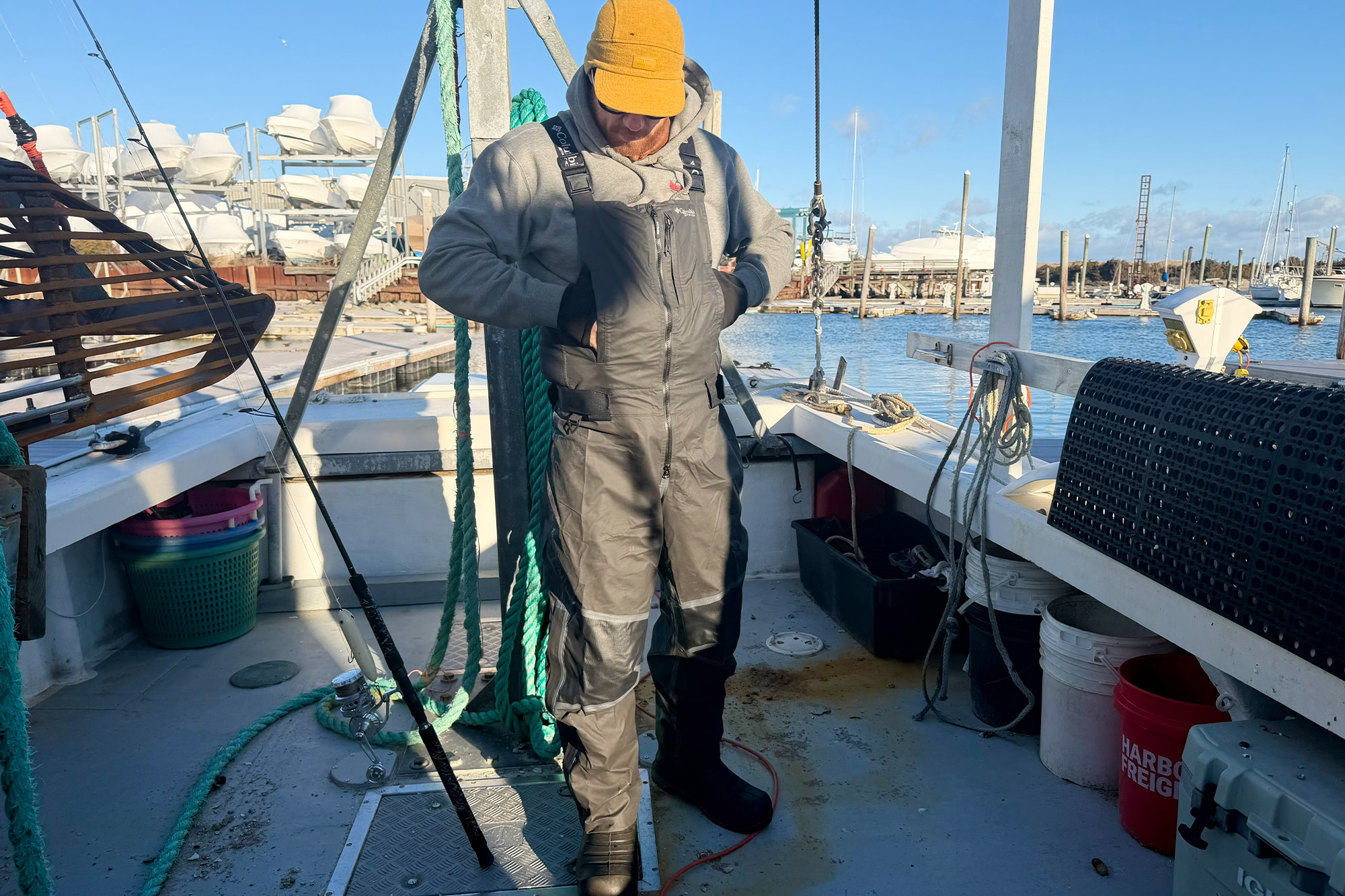
The ODX Bibs feature an adjustable waist for added compression and adjustable elastic suspenders that allow you to wear them high on your chest for full coverage. Compared to other bibs in my gear locker, the frontside coverage here stands out.
Stretchy side panels further improve mobility, and while the 77% polyester and 23% elastane panels slightly compromise waterproofing, it’s a trade I’m happy to make. In wet conditions, those panels are covered by your jacket anyway, so it’s largely a non-issue.
When the weather rolls in fast, the zippered ankle cuffs extend above the knee, making it easy to pull the bibs on or off without removing boots. This is a big improvement over bibs that only unzip to the shin and turn boot changes into a chore.
The only fit complaint I have is the ankle cuff adjustment. The Velcro doesn’t cinch quite tight enough and tends to flare outward, which can snag fly line while fishing. It’s a minor issue, but worth noting in an otherwise well-executed design.
The Jacket
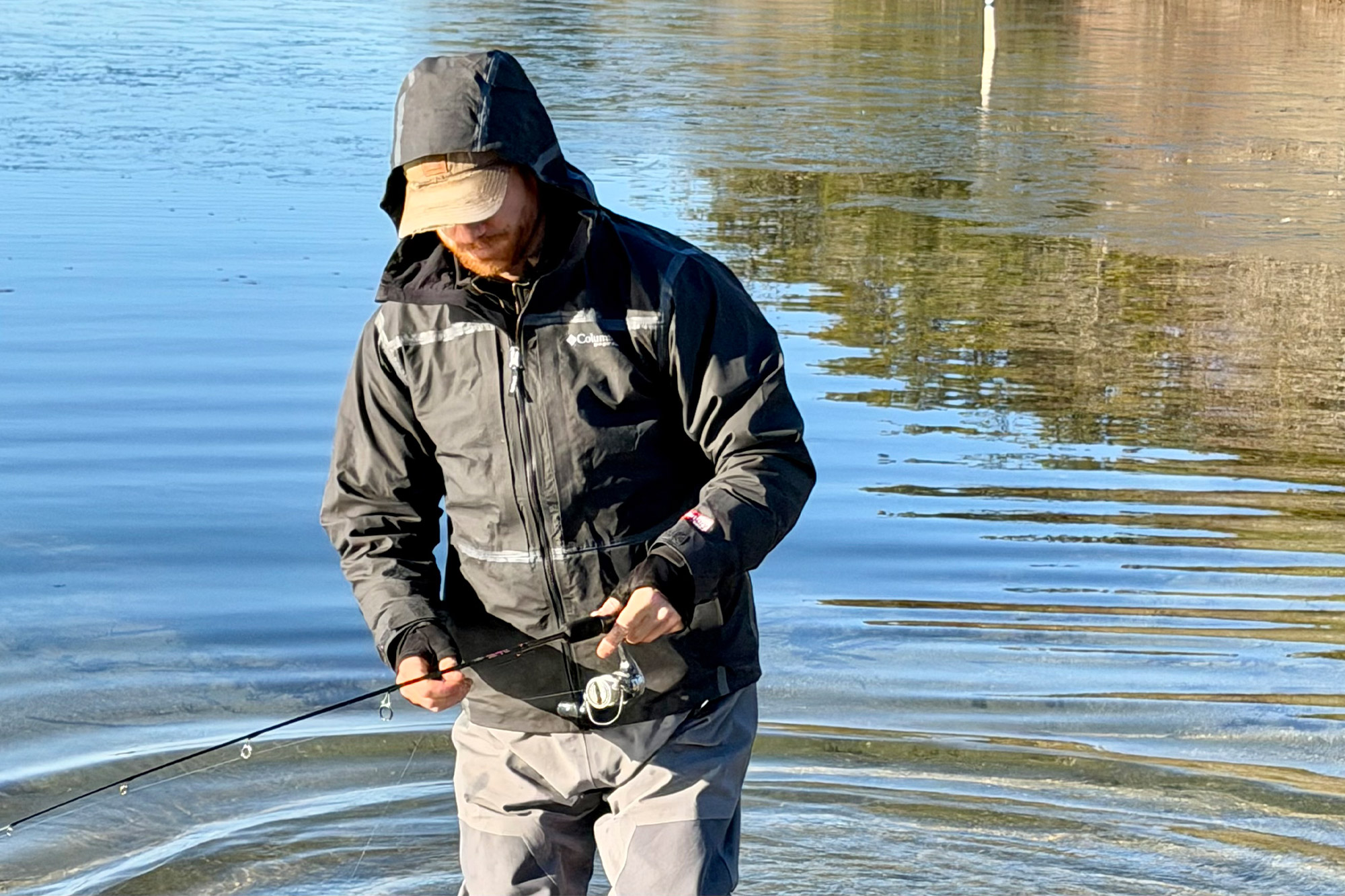
The ODX Jacket delivers an equally solid fit, with full coverage and thoughtful engineering throughout. The droptail hem adds extra protection, and the jacket pairs cleanly with the ODX Bibs to eliminate gaps in wind and wetness coverage. Once zipped up, it stays sealed, helped by an interior chest buckle that keeps the jacket snug and prevents flapping at high speeds.
Adjustable wrist cuffs paired with watertight neoprene comfort cuffs do an excellent job of keeping water out around the hands. While the bib ankle cuffs left us wanting, the jacket’s wrist cuffs are dialed, staying comfortable while blocking water from rain, splash, and fish handling.
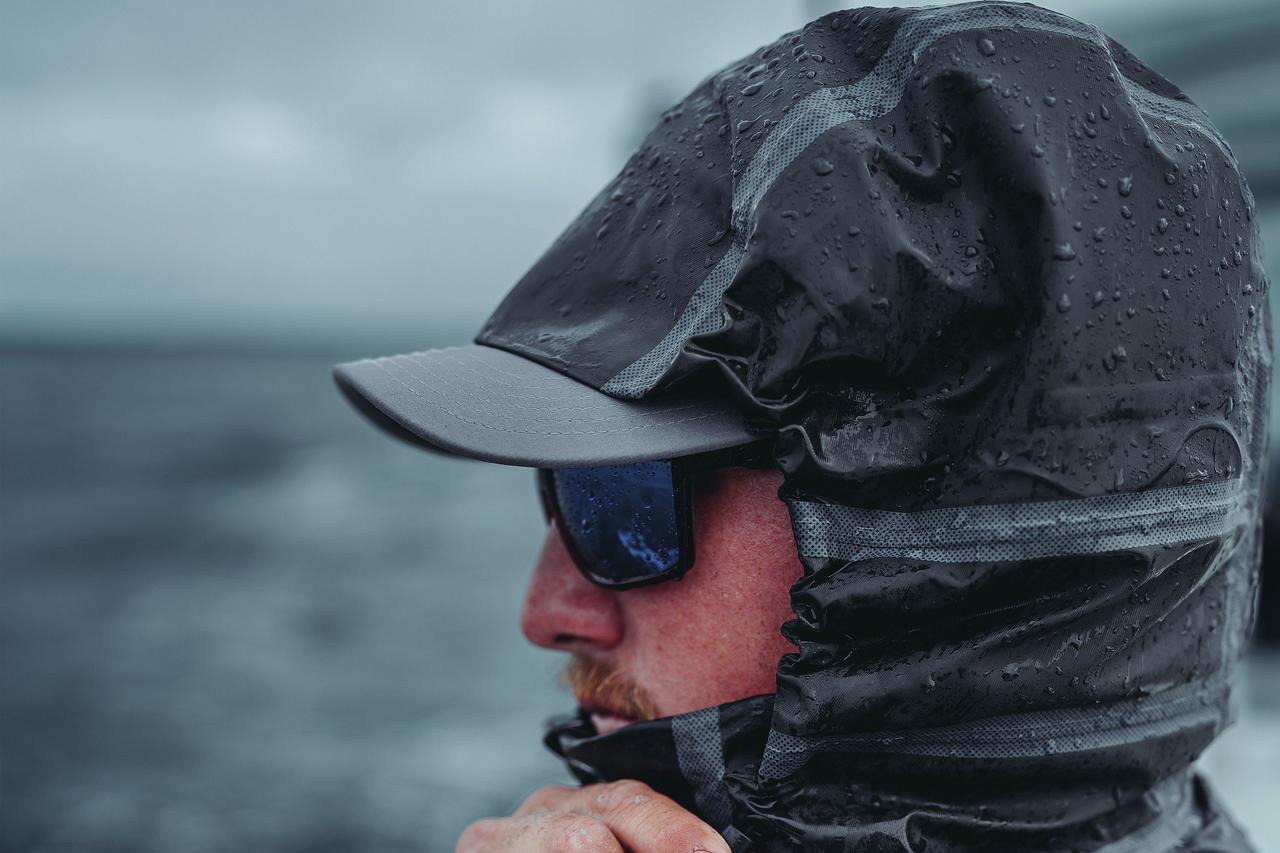
The hood is also well executed, featuring a bonded brim that holds its shape in wind and a high collar that provides solid face coverage when conditions turn nasty. The interior face fabric is beard-friendly and avoids chafing, an underrated detail. The hood cinches securely for high-speed runs and can be raised or lowered with the zipper fully closed, a simple feature that adds real functionality.
Materials + Columbia’s OutDry Extreme Technology
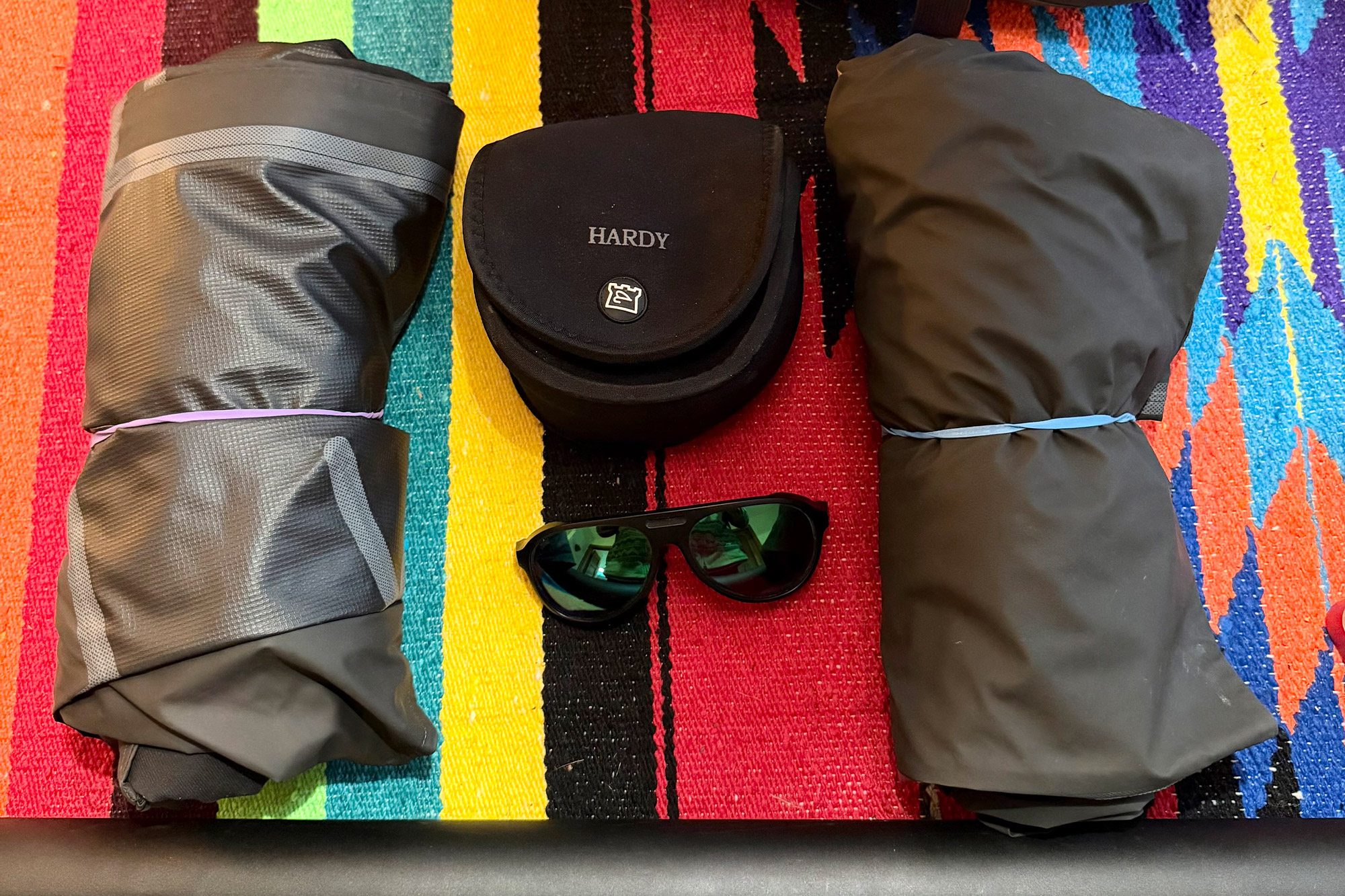
The Force XII Collection uses weatherproof, breathable materials built for comfort. The bibs feature a 100% recycled nylon shell with a polyester overlay for abrasion resistance, plus stretch side panels made from polyester and elastane. The ODX Jacket uses the same 100% recycled nylon shell.
The standout is Columbia’s OutDry Extreme technology. It pairs a fully impermeable exterior with a soft, moisture-wicking interior, delivering strong waterproofing while remaining breathable and comfortable. While not intended for next-to-skin wear, the interior avoids the stiff, crinkly feel common in storm gear.
OutDry Extreme uses a film-like membrane that blocks liquid water while allowing vapor to pass through. What sets it apart is that the membrane is laminated to the exterior, eliminating the need for a DWR coating. This improves moisture management, makes the fabric easy to wipe clean, reduces washing needs, and extends garment lifespan. The technology is also PFAS-free and requires no water during membrane coloration.
Both garments use a two-way PU Vislon front zipper to block moisture. Combined with the ODX Jacket’s neoprene comfort cuffs, water entry points are effectively eliminated once zipped and cinched.
Weight and Packability
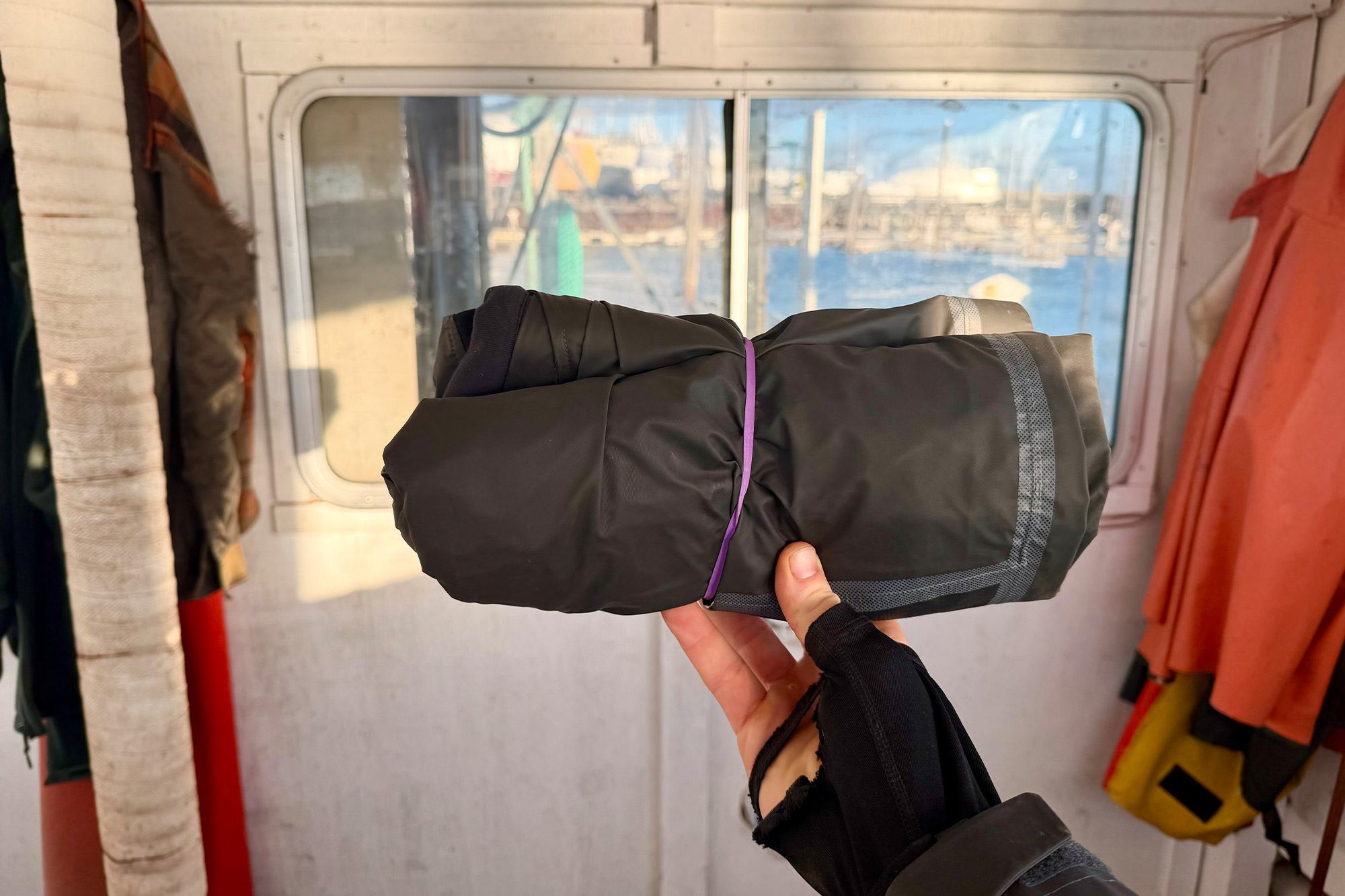
The overall weight and packed size of the Force XII Collection help set this storm gear apart. Foul-weather gear is often the bulkiest part of a fishing kit, but the bibs weigh 24.36 ounces, and the jacket comes in at 21.92 ounces in a men’s medium.
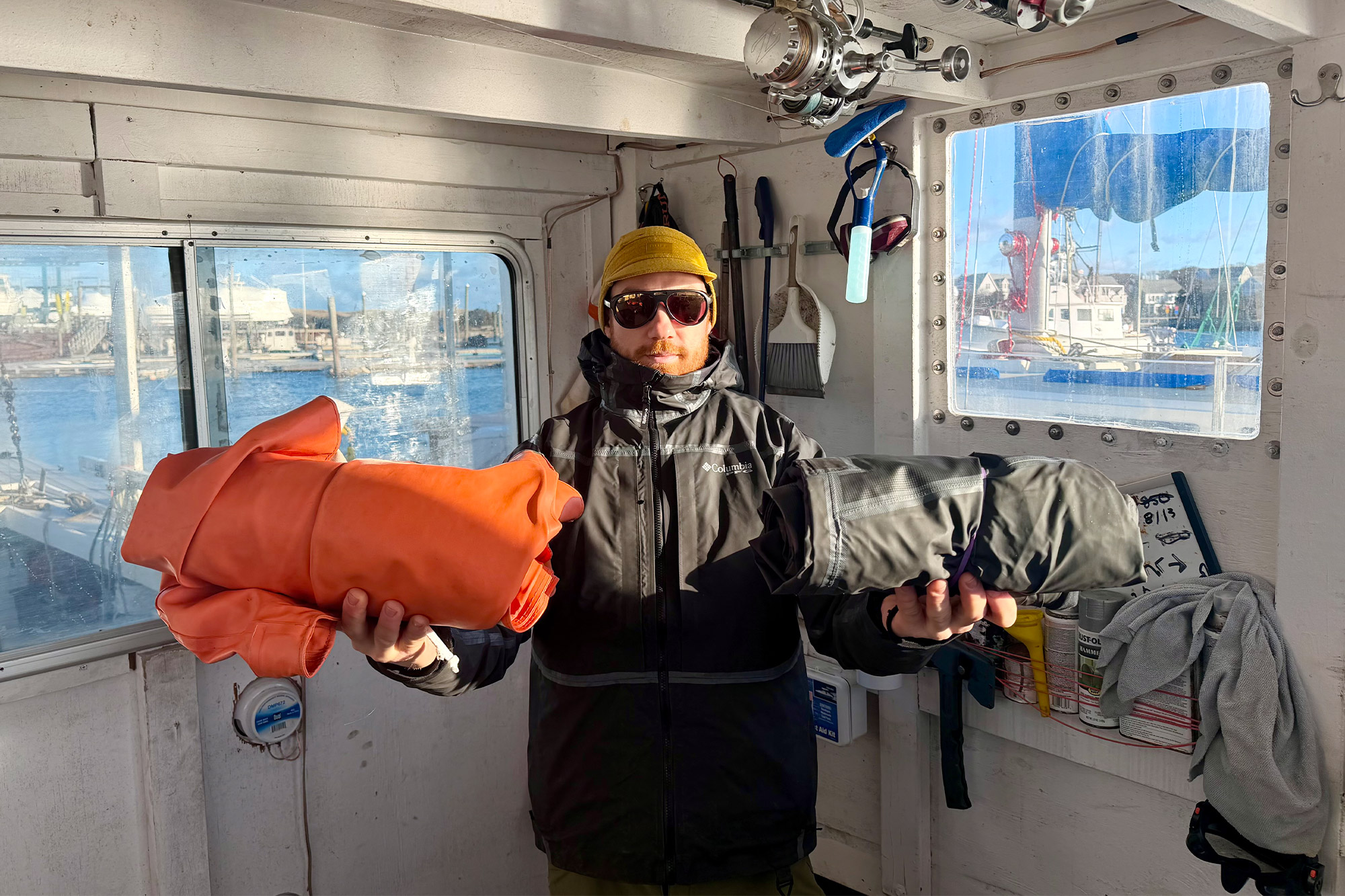
More impressive than the weight, both pieces fold and roll down small, making them easier to pack than traditional vinyl or poly storm wear. In terms of compressibility, the Force XII Collection lands between an ultralight rain shell and a ski jacket. For traveling anglers, it’s easy to bring along without sacrificing pack space.
Insulation
Columbia rates the Force XII Collection as “light warmth,” which feels accurate. The bibs and jacket aren’t ultralight or highly insulated, landing squarely in the middle. They won’t overheat you during warm summer rain, but they also won’t handle winter sleet without proper layering. The sweet spot is fall and spring conditions, roughly 40 to 60 degrees Fahrenheit.
That said, the fit leaves room for base and midlayers, making the system workable in winter if you dress accordingly. High summer heat is less ideal. While both pieces breathe well, the emphasis on total wetness exclusion creates a warmer shell that’s better suited to cooler conditions.
Pockets
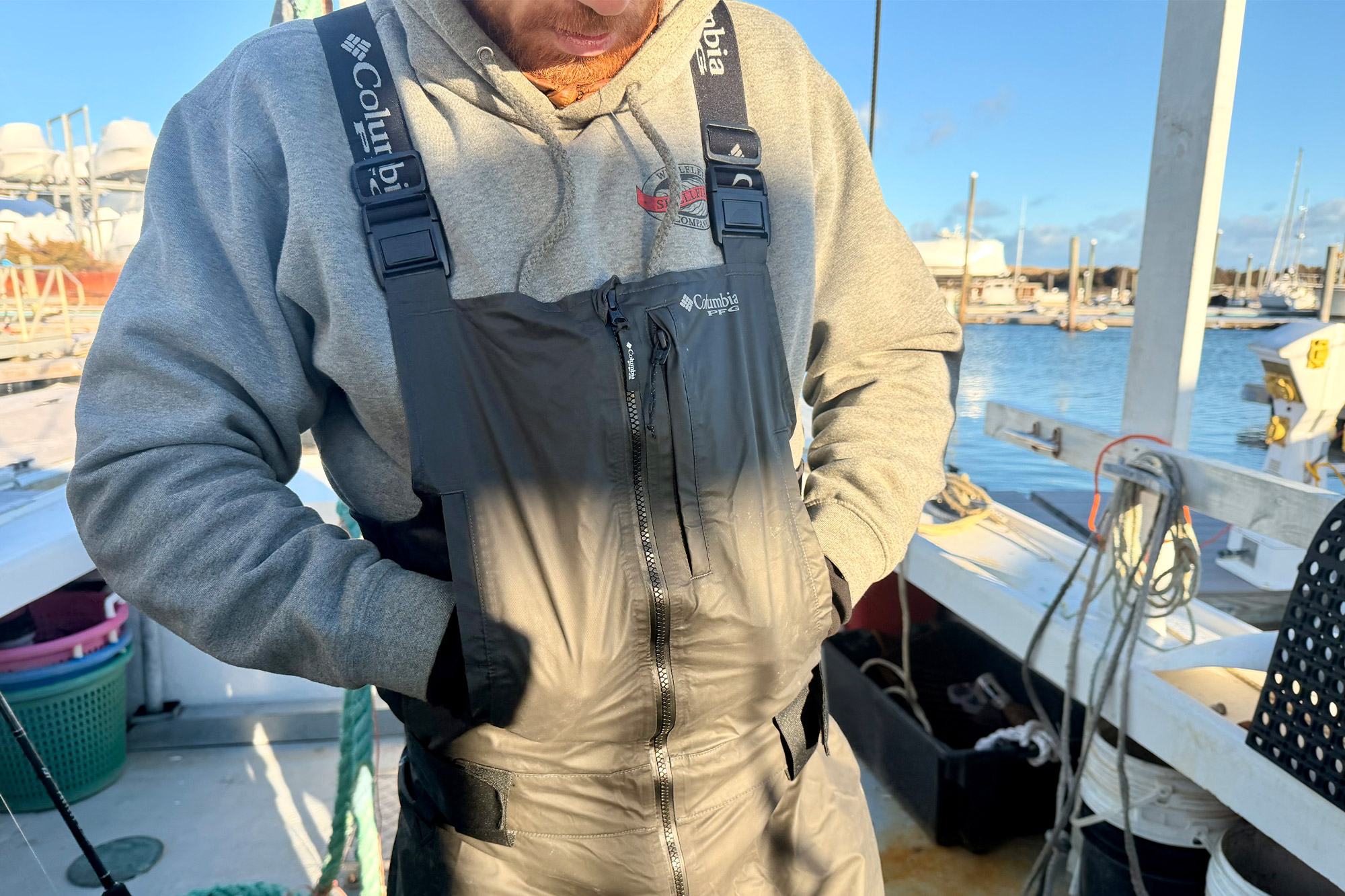
The ODX Bibs are light on pocket space. There are two shallow, fleece-lined hand pockets above the waist that are better for warming hands than storing gear. There’s also a single zippered chest pocket that’ll fit a phone, but not much else. There are no waist or thigh pockets, which helps keep weight and pack size down, making it a fair trade-off depending on your priorities.
The ODX Jacket makes up for that lack of storage with zippered chest and hand pockets and plenty of room for essentials. This split design works well if you’re wearing both pieces together, keeping the bibs streamlined while the jacket handles storage. On their own, though, the bibs will leave you wanting more pocket space.
What Could Be Better?
I have few complaints. The lack of pockets on the ODX Bibs can feel limiting when worn without a jacket, though the minimalist design clearly contributes to their lighter weight and packability. A single thigh pocket would strike a better balance.
The blacked-out, paneled look may not be for everyone, but it’s grown on me. While there are no color options, the overall aesthetic feels tough and functional without leaning too far in either direction.
Who Is It For?
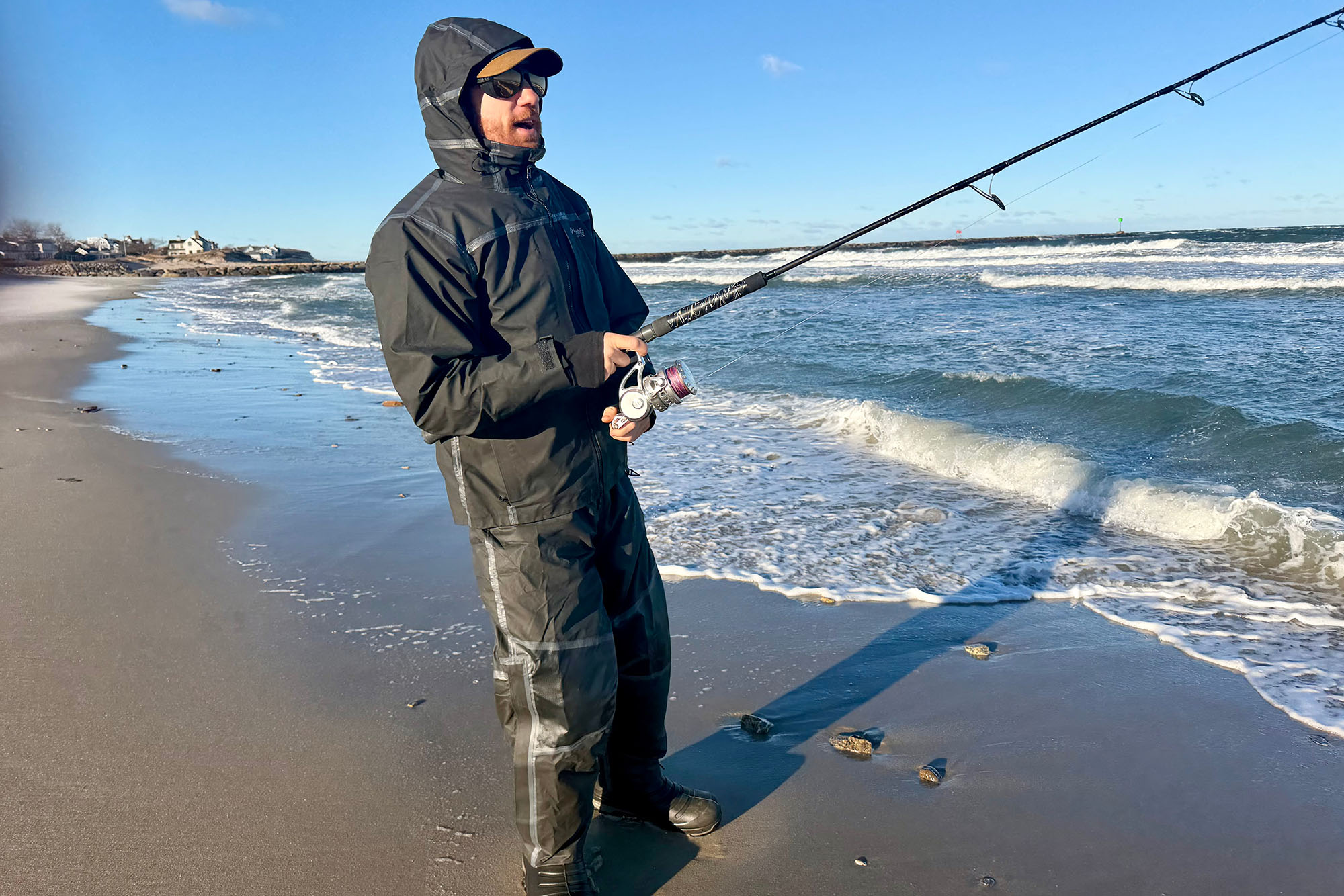
After ample testing, I can say with confidence that the Force XII Collection is perfectly geared toward no-nonsense anglers with an affinity for staying comfortable on the water. If your fishing trips have the potential to be ruined by a breach of your storm gear, then add these garments to the top of your must-have list.
As a Cape Cod-based angler, I found the Force XII Collection is excellently suited for offshore tuna trips. But, I think these garments will excel on any boat deck or beach where staying dry is pivotal.
Traveling anglers in need of a foul-weather system that’s especially packable will also find a friend here. It’s truly stormproof apparel that is also willing to stuff down into an already full backpack or duffel is hard to come by. So, I want to reiterate how packable the Force XII Collection is.
Final Thoughts
Offering top-notch protection from the wet and wind that also somehow packs down wonderfully compact, the Force XII Collection from Columbia absolutely has my blessing. A high-performance product line available at a more-than-reasonable price point, this is a foul-weather suit of armor I plan on wearing for many fall runs, offshore sends, and winter fishing sessions to come.
